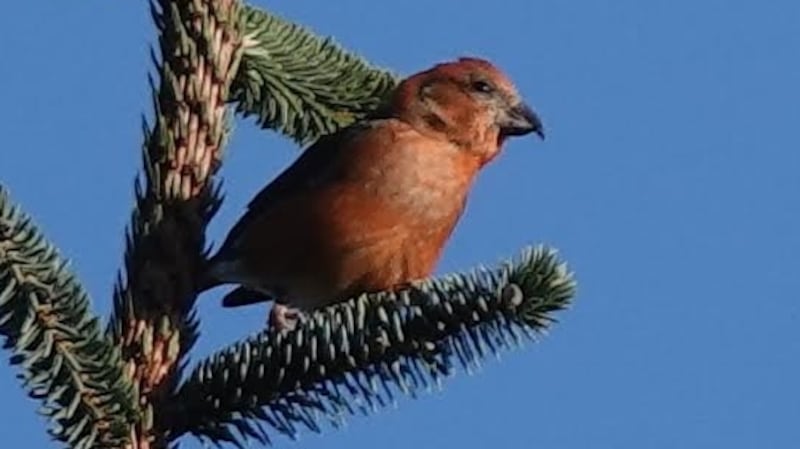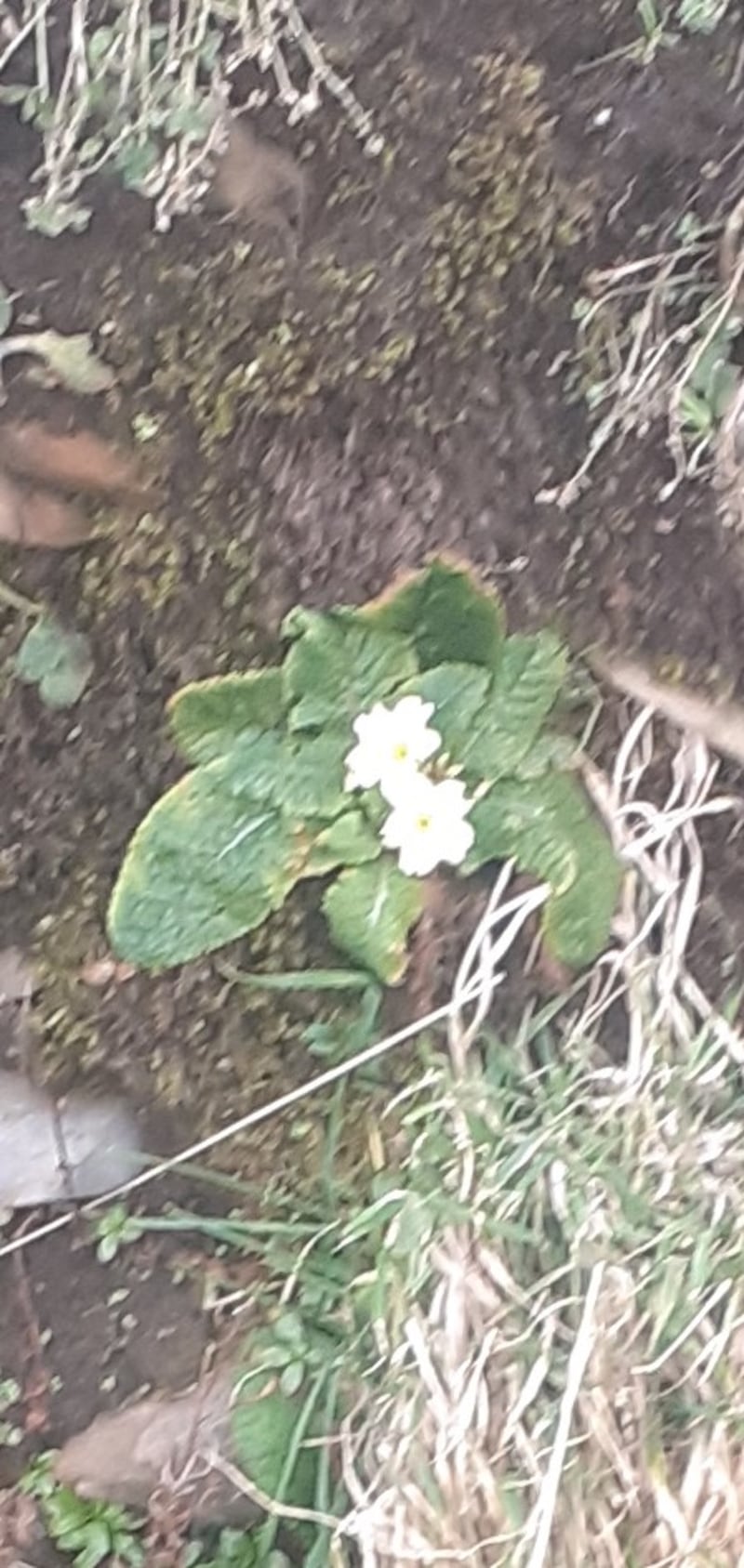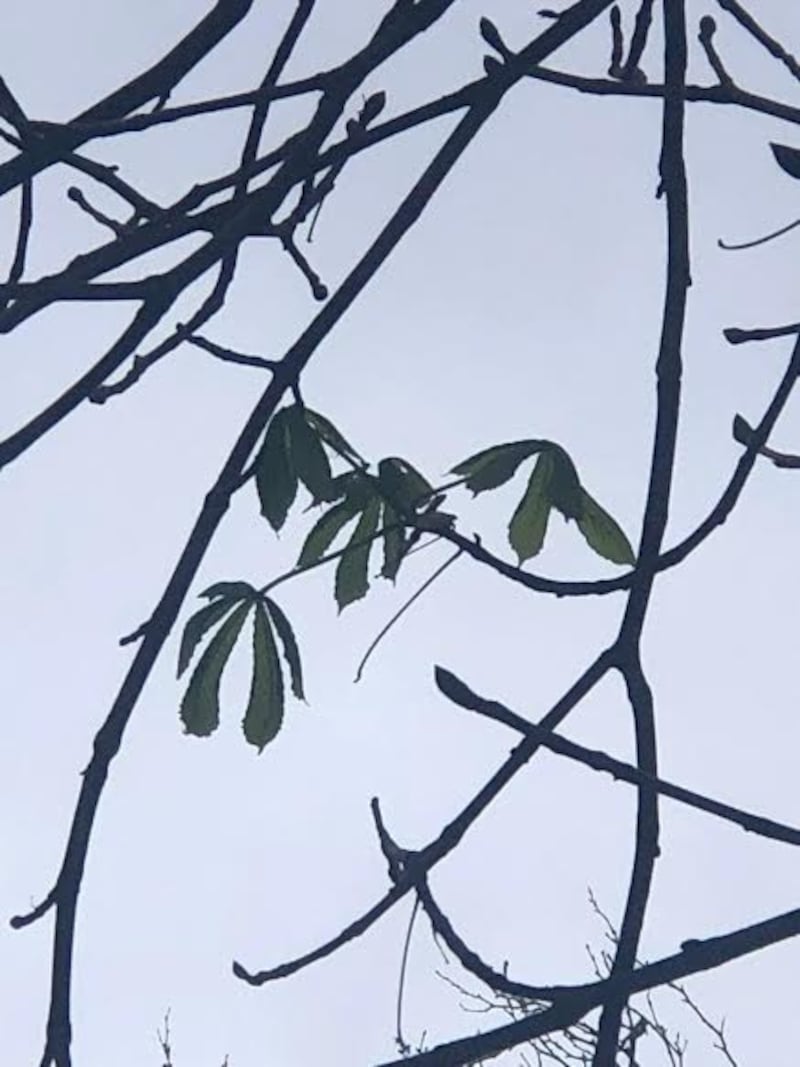This gull was on the flood barrier on the Waterford Quays. It was one of many being fed by a chap nearby. I love the imperious look! Larry Dunne, Co Wexford
Yes, but would you love it so much if it had just pounced and deprived you of your bag of chips? This is a juvenile herring gull (both sexes look the same). The plumage changes gradually to reach adult plumage of white body, light grey back and wings, and black and white wing tips over four years. Its conservation status in Ireland is red-listed because of a large decline in their breeding numbers here due to lack of food caused by overfishing. However, it is madness to feed them as they quickly learn to associate humans with food and will expedite matters if they feel you are not handing over your chips or ice-cream fast enough.

Martin Moloney took this photo of a crossbill while out birdwatching in Inishowen on February 21st. Crossbills are finches that live only in coniferous woodlands because they are dependent on the seeds of cones for their food. They can live in sitka spruce plantations as they are able to winkle out the seeds from the spruce cones with their specially adapted crossed bill. The sexes are coloured differently and as is usual the male gets all the brightest colours – crimson-orange in this case – as opposed to the duller yellow green of the female. They have a complicated breeding cycle as they will breed in co-ordination with conifer cone crops and so can start as early as February in suitable years.

I was joined in the bathroom by a ladybird last month. Is this unusual in January? David Devitt, Dublin
Our native ladybirds overwinter in sheltered sites in large numbers, usually outdoors, until warm weather returns in spring. This, however, is the invasive harlequin ladybird, which is a native of Japan. Your bathroom companion obviously has different notions about how to survive the winter than those of native ladybirds.

I saw this primrose in the hedgerow while walking in Moher, Liscannor, Co Clare in early January. What’s it doing in bloom so early? Suzanne Crosbie, Co Clare
The New Year Plant Hunt of the Botanical Society of Britain & Ireland took place as usual on three days over the new year. All species of plants in flower, which were growing in the wild in these islands, were recorded. Of the 629 species of flowers seen in 2024, more species were flowering late (53 per cent) than early (27 per cent). And 20 per cent of species were flowering as expected at New Year, including species that flower all-year round. This was the same proportion of each as in 2023. Primroses are categorised as an early-flowering species, but the National Biodiversity Data Centre has Irish records of them in flower in the wild in every month of the year, although the peak is in April.

I took this picture of horse chestnut bursting into leaf in Merrion Square beside the Oscar Wilde Statue on February 20th. Michael Maloney
Horse chestnut, which is native to the Balkans, is the first large deciduous tree to come into leaf here in spring. A GreenWave project, carried out by Forfas as part of its Discover Science and engineering programme with primary schoolchildren 2006-2011, collected images from around the country of horse chestnut trees (inter alia) coming into leaf. It was always St Patrick’s Day before the earliest were recorded. This is indeed very early this year, but horse chestnut is sensitive to spring warming and to the heat island effect from built-up city areas. February’s temperatures were up to two degrees above average.
Please submit your nature query, observation, or photo with a location, via irishtimes.com/eyeonnature










